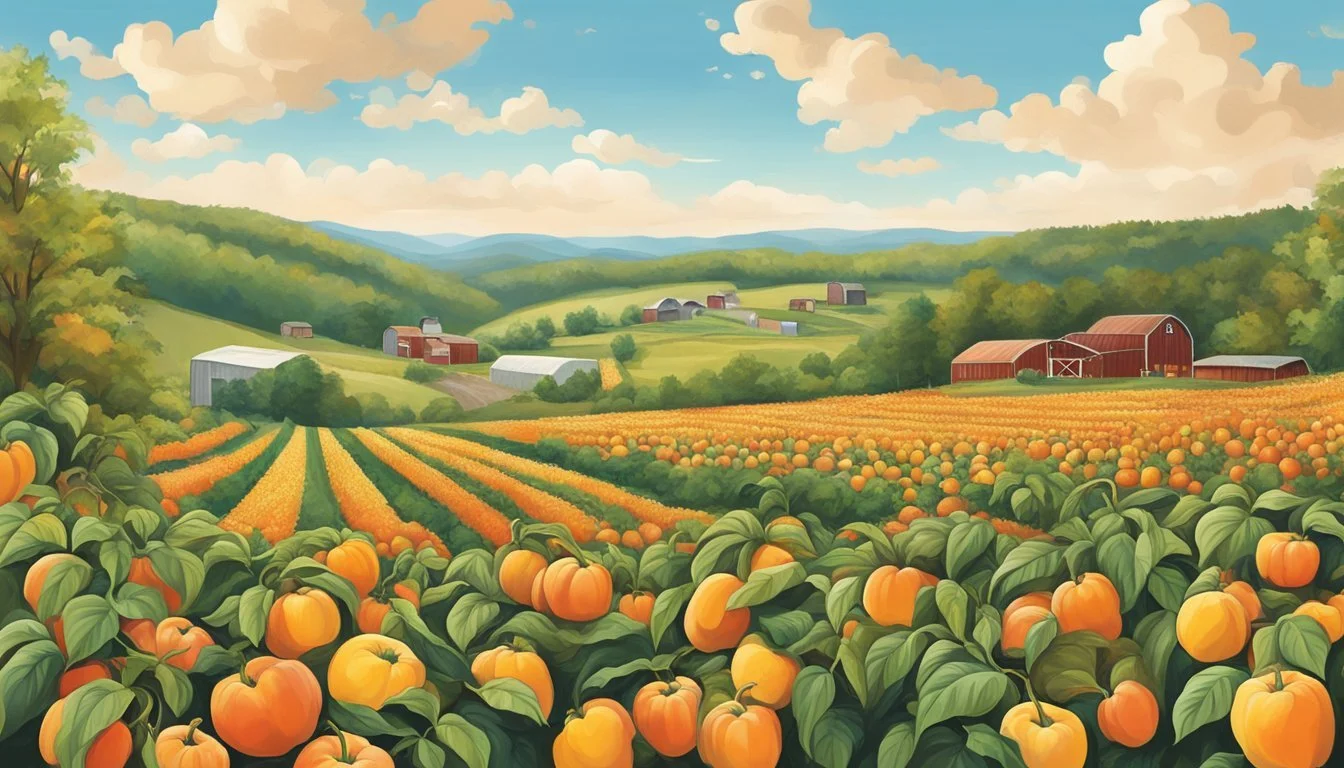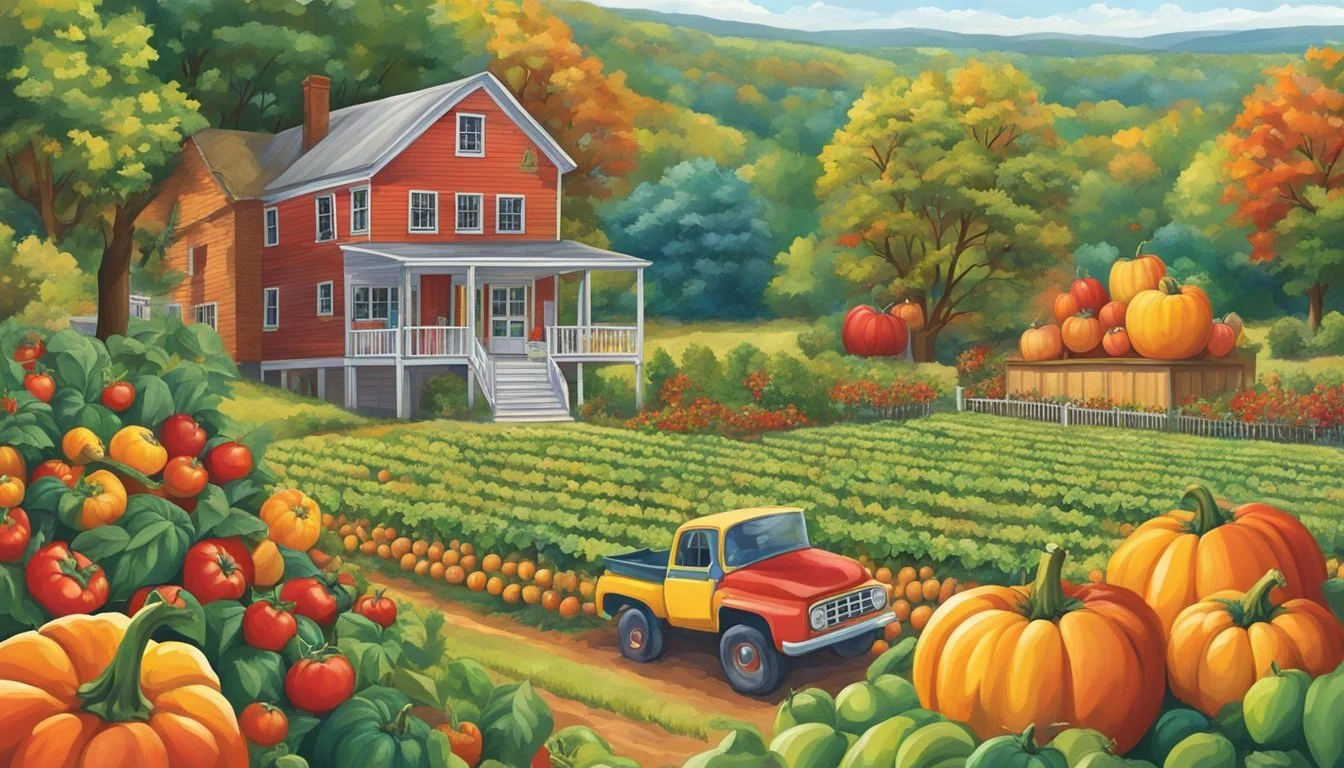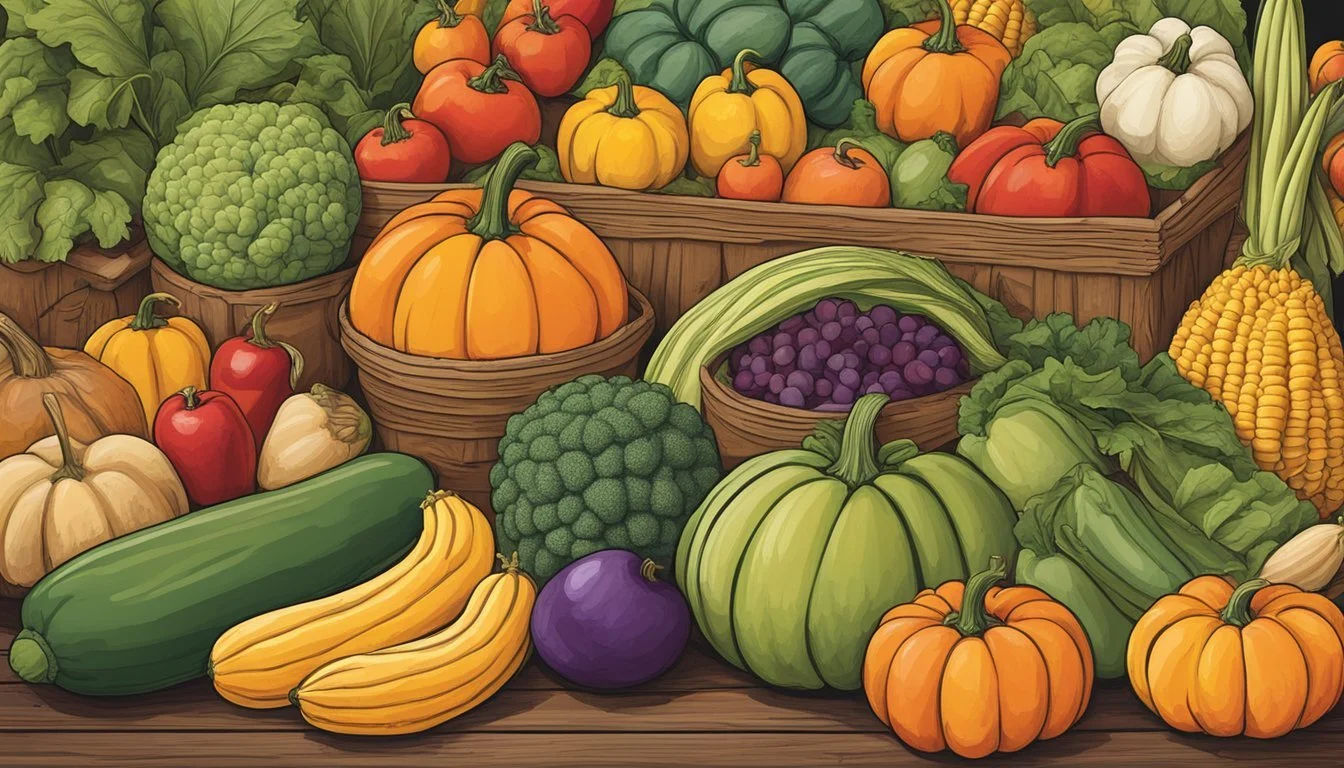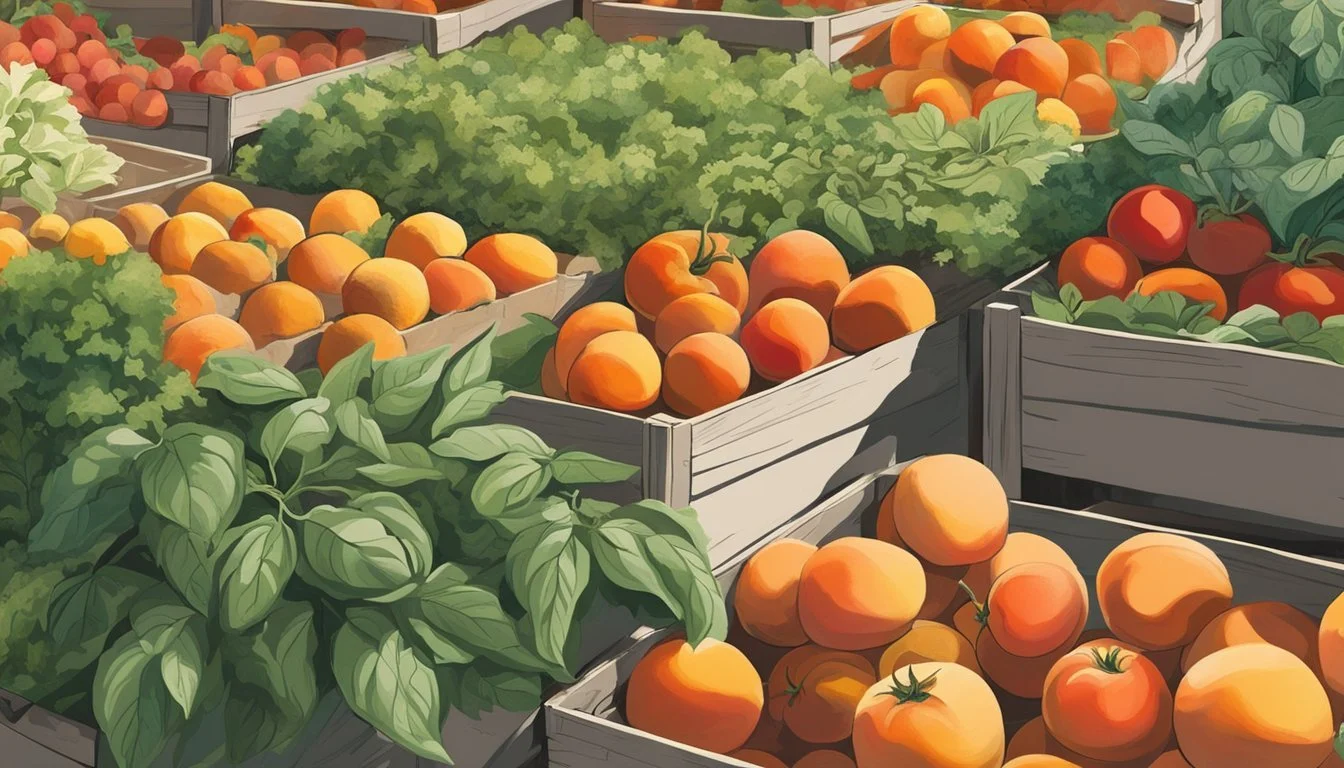West Virginia Seasonal Fruit & Vegetables in September
A Harvest Guide
This Article is Part of our West Virginia Seasonal Fruit & Veg Calendar
September in West Virginia marks a transitional period where the tail end of summer's bounty meets the first harvests of fall. During this month, the state's produce selection is rich and diverse, offering a range of fruits and vegetables that capture the essence of both seasons. Consumers can indulge in the last of the summer fruits, like golden delicious and grimes golden apples (how long do apples last?), while also enjoying the early arrivals of fall's harvest, such as a variety of squash and pumpkins.
The agricultural landscape of West Virginia provides a conducive environment for growing a wide array of produce. The state's September climate facilitates the ripening and harvesting of a number of fruits and vegetables, making it an ideal time for locals and visitors alike to experience the freshest flavors. From the crisp apples that the state is known for to the emergence of hardier vegetables, West Virginia's September produce is a testament to the region's rich farming heritage.
As the state transitions into the cooler days of fall, farmers' markets and grocery stores are filled with a colorful palette of seasonal produce. West Virginians take pride in their local harvest, often celebrating the season with festivals and community gatherings centered around the latest crop. From the sweet and tangy apples to the robust selection of squash, there's a sense of anticipation for the comfort and heartiness of autumnal foods that begins to emerge in West Virginia's September harvest.
Understanding West Virginia's Seasonal Calendar
West Virginia's seasonal produce calendar reflects the state's varied climate and topography, which allows for a diverse range of fruits and vegetables to thrive at different times of the year. This section offers insight into why seasonality matters and what one can generally expect from the state's growing seasons.
Importance of Seasonality
Seasonality is crucial because it ensures the freshest produce is available to consumers. Eating seasonally means enjoying fruits and vegetables at their peak flavor and nutritional value. In West Virginia, September marks the transition from summer to fall produce, influencing the types of crops that come to market. By understanding the state's seasonal rhythms, consumers support local agriculture, reduce their carbon footprint due to lower transportation emissions, and partake in a tradition that appreciates the uniqueness of each season's offerings.
Overview of West Virginia's Growing Season
West Virginia has a distinct growing season that varies from one region to another. Typically, the growing season starts in spring and extends into late fall, with variations due to elevation and topography. The summer season typically runs through September, and by this month, many fruits and vegetables are nearing the end of their peak availability. However, September often ushers in the start of the fall season, with certain crops like apples and pumpkins becoming more prevalent.
Here is what one might typically find during the transition period in September:
Fruits: Apples, peaches, and plums are ripe, while melons are at the end of their season.
Vegetables: Pumpkins begin to appear, alongside cool-weather crops like butternut squash (how long does butternut squash last?).
The conditions of one year may not mirror those of another, which means the actual availability of produce can vary. Factors include temperature fluctuations, rainfall, and frost dates, all of which play a role in determining the length and productivity of West Virginia's growing season. Consumers would do well to stay informed about year-to-year changes that could affect seasonal availability.
September's Seasonal Fruits in West Virginia
September in West Virginia brings a bountiful harvest of fruits, with flavors ranging from the sweet juiciness of peaches to the crisp freshness of apples. Local markets are abundant with these seasonal offerings.
Stone Fruits
Peaches: The tail end of peach season offers juicy and flavorful varieties perfect for pies and preserves. These are often found fresh in markets during early September.
Plums: Plums remain in season into September, with their sweet and tart profile enriching pastries, jams, or enjoyed on their own.
Berries
While berries are nearing the end of their season, one can still find:
Raspberries: These berries are suitable for fresh eating, desserts, and jams; their availability may extend into early September, adding a burst of vibrant flavor to dishes.
Apples and Pears
Apples: With a crisp texture and array of flavors, apple varieties such as the Grimes Golden and Jonagold become ripe in September, joining the earlier apples of the season.
Pears: Similar to apples in their versatility, pears harvested in September include varieties that can be enjoyed fresh or used in cooking due to their robust structure.
The fruits mentioned are just a few examples of the produce that can be savored during September in West Virginia. These seasonal fruits not only contribute to delicious cooking but also support local agriculture.
September's Seasonal Vegetables in West Virginia
As September arrives in West Virginia, a variety of vegetables reach their peak of ripeness, offering robust flavors and nutritional benefits. Farmers' markets are abundant with fresh produce, particularly root vegetables, leafy greens, and members of the nightshade and squash families.
Root Vegetables
In September, root vegetables thrive in the cooler climate. Local markets display a colorful selection of carrots and beets. Carrots, known for their crunchy texture and sweetness, are ideal for both raw and cooked dishes. Beets, with their earthy flavor, are versatile and can be roasted, boiled, or eaten raw in salads.
Carrots: Crisp and sweet, perfect for snacking or cooking
Beets: Rich and earthy, suitable for a range of culinary uses
Leafy Greens
Leafy greens, particularly kale, are in abundance during September in West Virginia. Kale is a nutritional powerhouse, rich in vitamins and minerals, and can be used in salads, smoothies, or as a cooked side dish.
Kale: Nutrient-dense and versatile, enjoyed raw or cooked
Nightshades and Squash
The nightshade family presents a bounty of tomatoes and peppers in September, bursting with flavor from the summer sun. Tomatoes, both juicy and rich, are at their best and can be found in various sizes and colors. Peppers range from sweet to hot, catering to different palates and recipes.
Squash, including varieties like acorn and butternut, begins to signal the transition into fall. These vegetables are known for their sweet, nutty flavor and can be roasted, pureed, or baked into hearty dishes.
Tomatoes: Juicy and flavorful, excellent for sauces, salads, and sandwiches
Peppers: From bell peppers to chili peppers, they add sweetness or heat to any dish
Squash: Sweet and nutty, ideal for comforting autumn recipes
Local produce in September is not only fresh but also supports West Virginia's agricultural community, bringing the best flavors of the season directly to the table.
Fresh Herbs and Other Produce
In September, gardens and markets in West Virginia are home to a bountiful range of fresh herbs (how long do fresh herbs last?) and unique produce. This is the time to savor the full-bodied flavors and reap the benefits of late-summer varieties.
Culinary Herbs
West Virginia's September climate nurtures a variety of culinary herbs, flourishing before the cooler autumn temperatures set in. Key players include:
Basil: An annual herb that is in its last burst of growth, it brings a peppery yet sweet flavor to dishes.
Sage: With its earthy and slightly peppery taste, sage is harvested in September for its aromatic leaves.
Cilantro: Known for its fresh, citrusy profile, cilantro is typically ready for harvest in the cooler days of early fall.
Garlic Scapes: These are the tender stems and unopened flower buds of hardneck garlic plants, offering a milder flavor compared to mature garlic bulbs.
Each herb contributes its unique flavor profile to dishes, enhancing the culinary experience of the season's harvest.
Unique Varieties
Diversity in produce is one of September's highlights in West Virginia. Among the seasonal specialties, one might find:
Heirloom tomatoes: With a vast array of shapes, sizes, and colors, they offer unparalleled taste compared to their grocery store counterparts.
Specialty peppers: From the mild bell to the hot habanero, peppers in September are at their peak, both in flavor and heat.
Uncommon squash: Varieties that go beyond the classic zucchini, such as delicata or acorn squash, are ripe for picking.
These varieties not only add depth to the flavor palette but also bring a unique twist to traditional recipes, enabling chefs and home cooks to create standout dishes.






